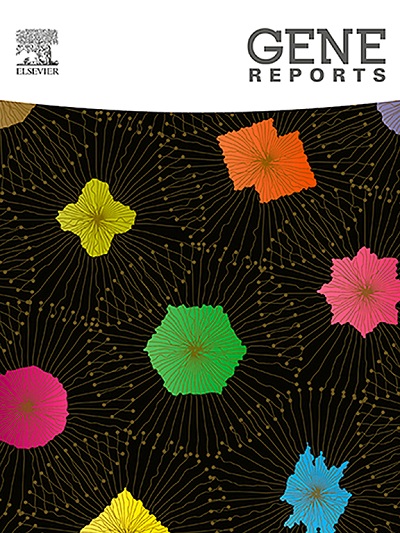Cerebrolysin in post-TBI recovery: Pharmacology and clinical evidence
IF 1
Q4 GENETICS & HEREDITY
引用次数: 0
Abstract
Traumatic brain injury (TBI) affects millions of individuals globally on an annual basis, with present therapeutic approaches primarily concentrating on the management of symptoms and the prevention of secondary injuries. Affected individuals frequently encounter enduring cognitive and functional deficits, which substantially diminish their overall quality of life. Nonetheless, in spite of progress made in acute medical care, efficacious treatments aimed at facilitating neurorecovery and enhancing long-term outcomes remain limited. Consequently, researchers are investigating innovative therapeutic interventions, with cerebrolysin emerging as a notable candidate. This neuropeptide formulation has exhibited neuroprotective and neurorestorative capabilities in preclinical investigations, fostering neuroplasticity, augmenting neurogenesis, and mitigating neuronal injury in TBI models. Furthermore, clinical trials have revealed potential advantages for human patients. This review aims to elucidate the mechanisms of action of cerebrolysin and its prospective function in TBI recovery, scrutinizing preclinical evidence pertaining to its neuroprotective effects and facilitation of brain repair. Additionally, we assess clinical findings from randomized controlled trials, which indicate enhancements in motor skills, cognitive abilities, and overall functional outcomes among TBI patients administered cerebrolysin. While preliminary results are promising, we examine existing evidence deficiencies and domains necessitating additional inquiry, encompassing the identification of patient subpopulations that are most likely to derive benefit, the optimization of dosage protocols, and the execution of more extensive, multi-center clinical trials. This thorough analysis aspires to clarify the potential of cerebrolysin as a therapeutic modality and to inform subsequent research endeavors in this vital domain.
脑溶血素在脑外伤后恢复中的作用:药理学和临床证据
全球每年有数百万人受到创伤性脑损伤(TBI)的影响,目前的治疗方法主要侧重于症状管理和继发性损伤的预防。受影响的个体经常遇到持久的认知和功能缺陷,这大大降低了他们的整体生活质量。然而,尽管在急性医疗方面取得了进展,但旨在促进神经恢复和提高长期疗效的有效治疗仍然有限。因此,研究人员正在研究创新的治疗干预措施,脑溶血素作为一个值得注意的候选人出现。这种神经肽制剂在临床前研究中显示出神经保护和神经恢复能力,促进神经可塑性,增强神经发生,减轻脑损伤模型中的神经损伤。此外,临床试验已经揭示了对人类患者的潜在优势。本文旨在阐明脑溶素的作用机制及其在创伤性脑损伤恢复中的潜在功能,详细分析其神经保护作用和促进脑修复的临床前证据。此外,我们评估了随机对照试验的临床结果,这些结果表明,脑损伤患者服用脑溶血素后,运动技能、认知能力和整体功能结果得到了增强。虽然初步结果是有希望的,但我们检查了现有证据的不足和需要进一步调查的领域,包括最有可能获得益处的患者亚群的识别,剂量方案的优化以及更广泛的多中心临床试验的执行。这项深入的分析旨在阐明脑溶素作为一种治疗方式的潜力,并为这一重要领域的后续研究提供信息。
本文章由计算机程序翻译,如有差异,请以英文原文为准。
求助全文
约1分钟内获得全文
求助全文
来源期刊

Gene Reports
Biochemistry, Genetics and Molecular Biology-Genetics
CiteScore
3.30
自引率
7.70%
发文量
246
审稿时长
49 days
期刊介绍:
Gene Reports publishes papers that focus on the regulation, expression, function and evolution of genes in all biological contexts, including all prokaryotic and eukaryotic organisms, as well as viruses. Gene Reports strives to be a very diverse journal and topics in all fields will be considered for publication. Although not limited to the following, some general topics include: DNA Organization, Replication & Evolution -Focus on genomic DNA (chromosomal organization, comparative genomics, DNA replication, DNA repair, mobile DNA, mitochondrial DNA, chloroplast DNA). Expression & Function - Focus on functional RNAs (microRNAs, tRNAs, rRNAs, mRNA splicing, alternative polyadenylation) Regulation - Focus on processes that mediate gene-read out (epigenetics, chromatin, histone code, transcription, translation, protein degradation). Cell Signaling - Focus on mechanisms that control information flow into the nucleus to control gene expression (kinase and phosphatase pathways controlled by extra-cellular ligands, Wnt, Notch, TGFbeta/BMPs, FGFs, IGFs etc.) Profiling of gene expression and genetic variation - Focus on high throughput approaches (e.g., DeepSeq, ChIP-Seq, Affymetrix microarrays, proteomics) that define gene regulatory circuitry, molecular pathways and protein/protein networks. Genetics - Focus on development in model organisms (e.g., mouse, frog, fruit fly, worm), human genetic variation, population genetics, as well as agricultural and veterinary genetics. Molecular Pathology & Regenerative Medicine - Focus on the deregulation of molecular processes in human diseases and mechanisms supporting regeneration of tissues through pluripotent or multipotent stem cells.
 求助内容:
求助内容: 应助结果提醒方式:
应助结果提醒方式:


